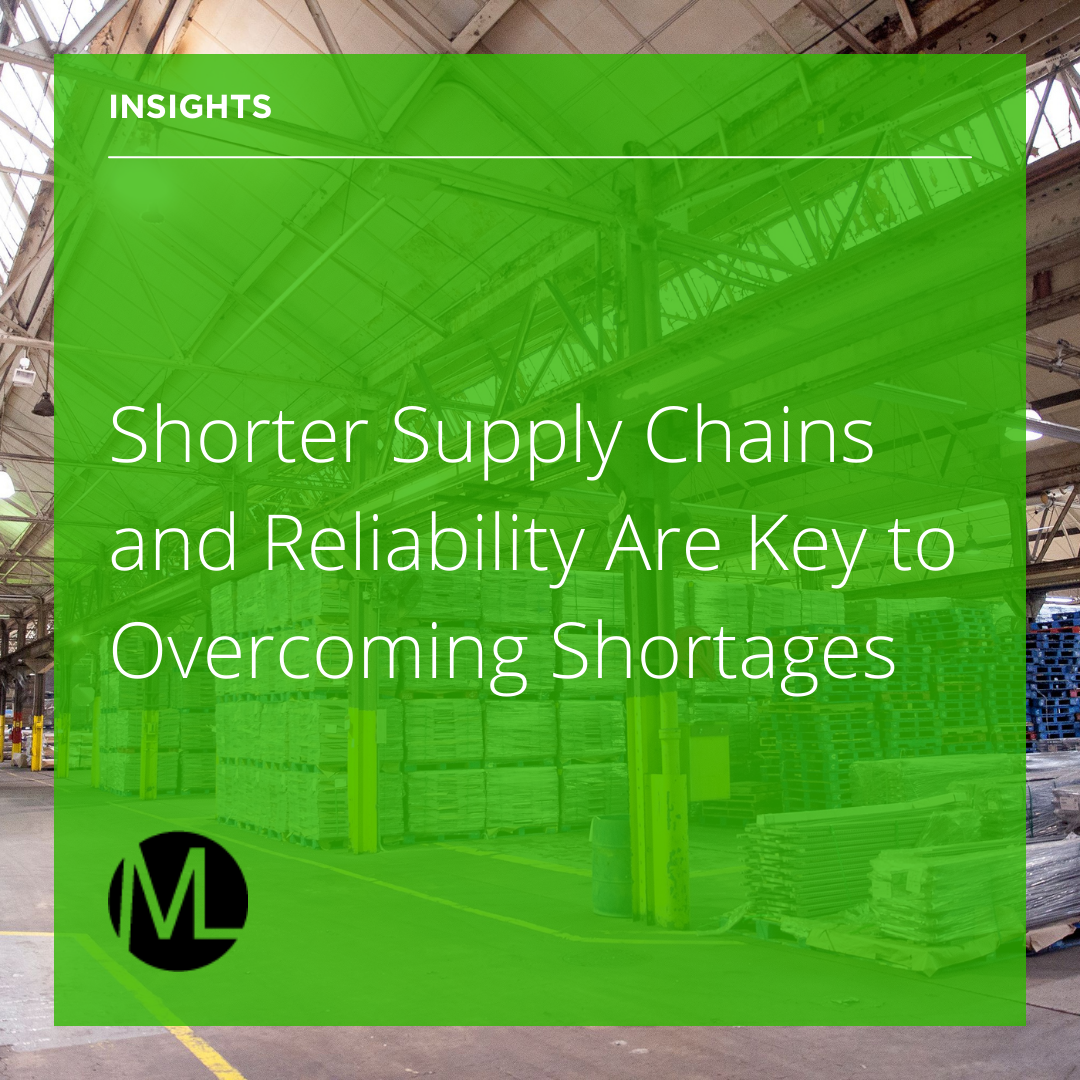Shorter Supply Chains and Reliability Are Key to Overcoming Shortages
If you haven’t heard, we’re facing a supply chain crisis. Car manufacturers can’t get chips, customers can’t get paper products, and prices are skyrocketing. We’ve seen canals blocked, ships waiting for port, and finger-pointing from the left and right. But for the people and companies waiting for goods, pointing blame matters a whole lot less than getting the things needed to operate.
That said, there’s one myth going around that needs to be addressed—and that’s what we’re looking to do today.
Is Just-in-Time to Blame for the Supply Chain Crisis?
Ships are waiting for port. The trucking industry is stretched thin. Inflation is accelerating. Shelves are bare. And everyone seems to be looking for something or someone to blame. And sadly, it appears that the talking heads of the world have set their sights on an “excessive reliance on just-in-time manufacturing.”
It’s an easy scapegoat—and it’s nothing new.
During the Suez Canal blockage, it was the New York Times saying it. During the current slowdown in California, it’s the Wall Street Journal making the argument. In January 2006, the Wall Street Journal published “Just-In-Time Inventories Make U.S. Vulnerable to a Pandemic.”
The Bullwhip Narrative
After all, if a supplier keeps minimum inventory, and there’s disruption in the system, it starts a bullwhip effect that results in “low inventories.” This fragility, they argue, results from an endless pursuit of efficiency that left the supply chain vulnerable to unpredictable events or disruption.
But is it the truth? Not really.
Defining Just-in-Time
Defined by the Lean Enterprise Institute, Just-in-Time is a system of production that makes and delivers just what is needed, just when it is needed, and just in the amount needed. The system is comprised of three operating elements: the pull system, takt time, and continuous flow.
- Pull Production: A method of production in which downstream activities signal their needs to upstream activities.
- Takt Time: The available production time divided by customer demand.
- Continuous Flow: Producing and moving one item at a time, with each step making just what is requested by the next step.
JIT aims for the total elimination of all waste to achieve the best possible quality, lowest possible cost and use of resources, and the shortest possible production and delivery lead times. Or as discussed in an Industry Week article,
“JIT is about providing end-use consumers with exactly what is needed, when it is needed, with the right level of quality and features, in the right quantity, at the right price. A provisioning system starts with a production process; but it ends with a consumer located far from the factory, encompassing the transportation, distribution, wholesaling and retail aspects of the supply chain as well. Seen from the end consumer’s point of view, our global provisioning system is anything but JIT.”
The Wrong Argument
So, a system built on minimal waste sounds inherently risky, right? Not according to Ken Eakin at IndustryWeek. Or Eamon Barrett at Fortune. Or naturally, Lean Enterprise Institute. If done right, JIT is not just viable, it’s incredibly valuable.
The problem is that “JIT production has frequently been misconstrued as ‘JIT delivery’ or ‘JIT inventory control’,” according to LEI. It works the way it should—but works best when the supply chain is short and agile. As noted by Eakin, JIT stops at the factory—not the store shelves. Inventories aren’t low—they’re currently at the same level as 2000. It’s just that they’re sitting on a big floating warehouse.
Bringing Production Closer to the Customer
Whether it’s toilet paper, textiles, or T-stands, the best way around the shipping crisis is to shorten the supply chain. Eakin notes,
“Just as JIT production prefers suppliers to be physically nearby, so too do our factories need to be geographically closer to consumers if they want to deliver the right thing at the right time on a reliable basis. When products have to move from a distant overseas factory to your house by way of a long network of handoffs between ports, ships, trucks, trains, depots and warehouses, all run by different companies with different capacities and prioritization systems, the probability that something, somewhere, will be delayed is very high, especially during times of high demand when the system is under intense strain.”
Eakin concludes that while JIT production isn’t the problem, it’s not the cure-all—at least on its own. When the supply chain is disrupted, the answer lies in a shorter transportation network.
A Flexible, Resilient, and Reliable Partner
When things are running smoothly, a long, complex supply chain is fine. But in the midst of a supply chain hiccup, a shorter path to goods is key to survival. Either way, the key to success lies in your ability to find a reliable partner in good times and bad.
At Morgan Li, we’re known for transforming spaces on time and on budget. How do we make—and deliver on—this promise? Simple. We’re built on flexibility.
With hundreds of thousands of square feet of domestic production space and millions more across the Pacific, you can trust us to connect you with the custom fixtures, furniture, and graphics you need. Whether you need a quick turnaround or are looking to leverage the entirety of our global scale, we’re working tirelessly to shorten the supply chain and deliver what you need, when you need it.
Get to know more about us, our capabilities, and our endless roster of satisfied clients. Ready to get started? Drop us a line.


